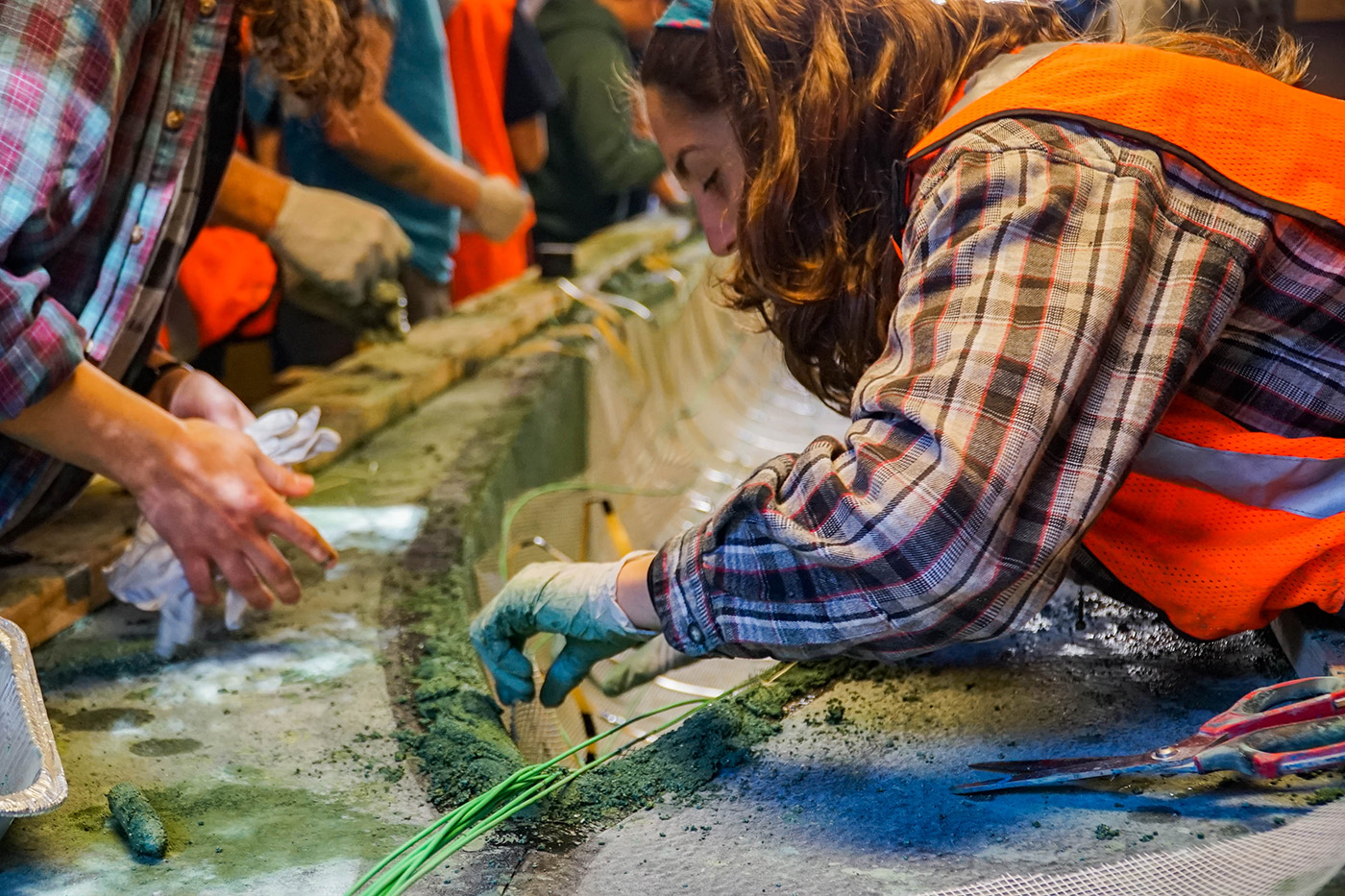A concrete canoe might seem like an oxymoron, but Cal Poly’s civil engineering students are employing the laws of science and looking to row their way to another national championship.
The Cal Poly team participates in the The National Concrete Canoe Competition where they build canoes out of concrete and race them in the water. Cal Poly’s team were national champions the past two years and hope to continue their streak in 2019.
About 60 volunteers, made up of students and alumni, helped cast the final concrete canoe on Jan. 19. After eight hours of mixing, blending and placing concrete, the project finally came together as a cohesive piece.
The team received the rulebook for the American Society of Civil Engineers’ (ASCE) competition early September and immediately dove into the design and construction process. Each year the team must adhere to certain design specifications, and this year, the canoe’s bridge must not exceed 22 feet.
From an outside perspective, the casting process is relatively hectic. Around 50 people crowd into a small shed around the canoe’s mold, feverishly placing concrete before it dries. The rest of the team members reside upstairs, where they weigh and mix different elements into the concrete.
Civil engineering junior Eleni Korogianos is this year’s construction and aesthetic design captain. She spent that day running around with trays of concrete and spray bottles.
“The concrete is hardening as we speak,” Korogianos said as she handed more concrete to a teammate. “We use spray bottles to keep the concrete wet and workable. Ideally, it should be placed within 10 minutes of mixing.”
The canoe is made using ultra lightweight concrete: a mixture of aggregate, cement and water. The concrete is then placed in three layers, each separated by either fiberglass or carbon reinforcement. The first layer is an eighth of an inch thick, the second is one-sixteenth and the third is another eighth, making the whole canoe no more than an inch in thickness.
“The goal is to make it as light as possible while keeping the structural integrity,” civil engineering alumna Hailey Bond said.
As for how exactly concrete floats, project manager and civil engineering junior Mason Breipohl said the answer is two-fold.
“Lightweight concrete is less dense than water,” Breipohl said. “The second part is the whole design process. We use a software where we look at the buoyancy forces and how the water is displaced.”
Once the canoe is cast, the team must wait 28 days while the concrete cures. After the delay time is completed, further finishing touches are added to the canoe — through processes such as sanding, sealing and placing the team’s letters.
The finished product is expected to hold up to four people and travel 200 meters in distance.
This year, Cal Poly will host the regional competition at Lake Nacimiento in Northern San Luis Obispo County April 3-6. The top finishing team from all 19 regional competitions will then head to nationals.
Over the past decade, Cal Poly has won the ASCE competition five times; this year they are looking to defend their 2018 national champion title. The national competition is expected to take place in Melbourne, Fla. in early June.
“[The Concrete Canoe Team] is a great experience for the civil engineering community,” civil engineering graduate student Jacky Loh said. “We encourage everyone of all majors to come out, place some concrete and have some fun.”

